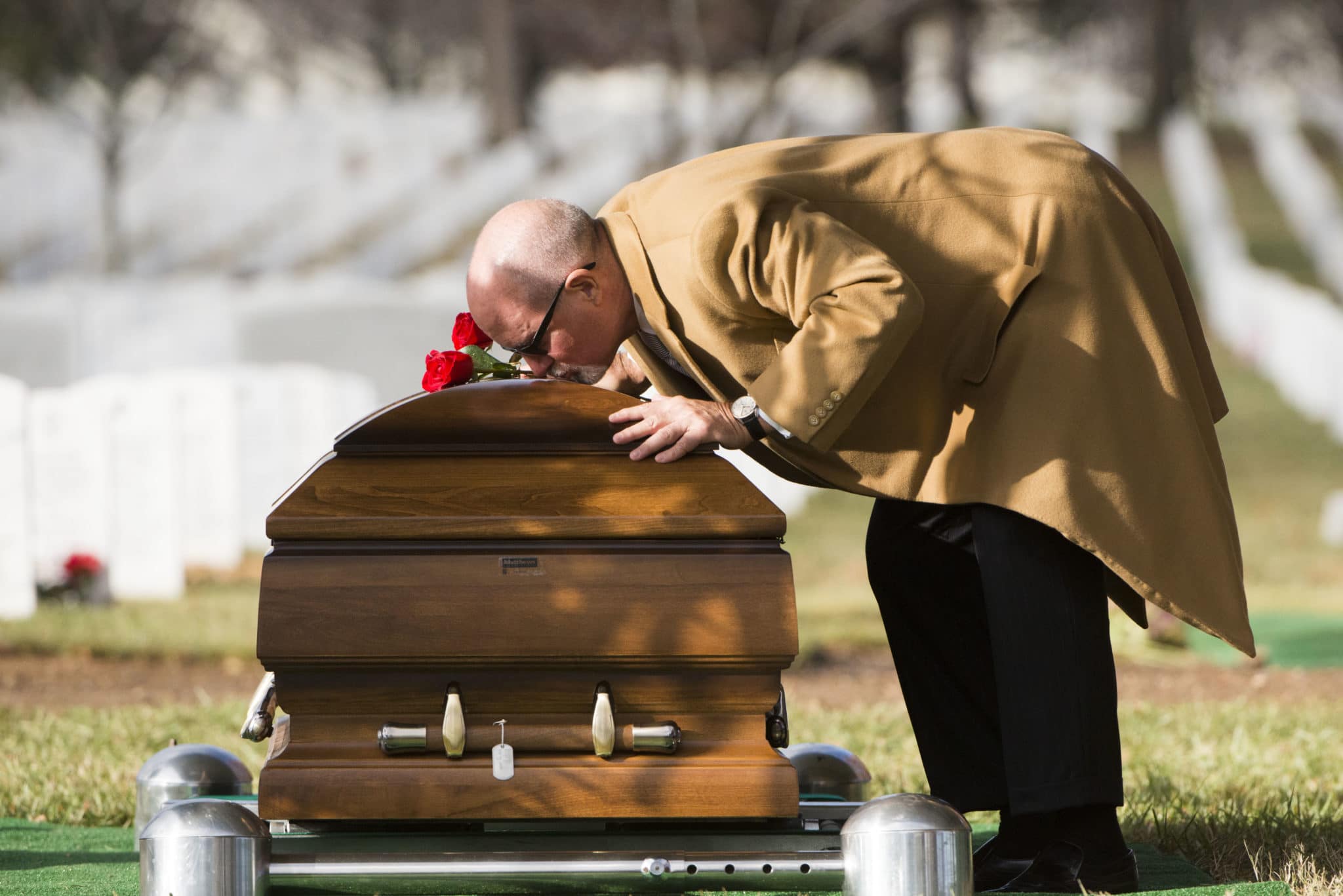
Funerals are different for everyone, as are all memorial and graveside services. However, graveside services are usually held outdoors at the site of the burial plot. Sometimes, the entire funeral ceremony is held as a graveside service. Other times, it is only part of the ceremony or excluded altogether. Whether you’re planning to attend a graveside funeral service or host one yourself, this article will guide you through what to expect.
What is a graveside funeral service?
A graveside service, sometimes called a “direct burial” or a “graveside committal” takes place at the deceased’s final resting place—usually a cemetery or private burial ground near a mausoleum or columbarium niche. If the deceased was cremated, a graveside service may involve burying or scattering their ashes in a special place. Regardless of the interment method, graveside services typically take place outdoors.
Whether a graveside service is part of your or your loved one’s funeral plan is a personal choice. Many families feel a sense of closure by saying their goodbyes at the deceased final resting place. Others may consider graveside service part of a religious or cultural tradition. In some cases, survivors may strive for simplicity for religious, financial, or lifestyle reasons. In this case, a standalone graveside service may be the best option.
It is common for a graveside service to take place immediately after a funeral. In this case, it is often an intimate ceremony for family members and close friends. However, there are many graveside services that are open to all guests who attended the funeral service, or even members of the community.
Some families may choose to hold the entire funeral as a graveside service, where the entire ceremony is held outdoors. This is especially common for those who served in the military. In this case, the ceremony will also include presenting the American flag to the next of kin, the playing of “Taps” by a lone bugler (or by audio recording), and lowering the flag to half-mast.
What is a graveside service program?
Often, a graveside service is not so different from a traditional funeral service, but they usually last between 20 and 30 minutes. Depending on the needs and preferences of the family, the service can be significantly longer or shorter. To begin, a graveside service is typically led by a funeral celebrant. Many graveside service programs begin with an opening reading or speech offered by the celebrant. This can be scripture, meaningful quotes, or an original speech.
Next, there is often a moment of silence or invocation. During this time, attendees might be invited to pray or reflect on their relationship with the deceased. While many graveside services are religious, it is just as common to hold a secular or humanist graveside service. In the end, the most important thing is to honor the deceased and provide comfort and closure to close friends and family.
After a moment of silence, the funeral celebrant will likely read the obituary, which pays respects to the deceased and offers condolences to the family. Sometimes, the obituary is included in a printed program rather than read aloud. This is a personal choice.
Regardless of where the obituary appears, writing an obituary that perfectly honors and captures the spirit of your loved one can feel like an overwhelming task in the midst of grieving. It is common for loved ones to ask the funeral celebrant for help drafting and organizing a meaningful obituary.
Once the obituary has been read, the funeral celebrant or a close friend or family member will give a eulogy. A eulogy can be just as difficult as an obituary is to write, and there is nothing wrong with asking for help from a professional if you so choose. The most important thing to remember is that the words in the eulogy should come from the heart.
Finally, the ceremony often ends with a final moment of silence. In religious ceremonies, this might be called a benediction. This marks the end of the ceremony, and mosts guests will leave to allow the deceased’s immediate family to have privacy during the final and often intimate moments before burial.
What does a graveside service cost?
Standalone graveside services are among the most affordable options. Many families choose to hold a graveside funeral service or direct burial to reduce the cost of the funeral. By foregoing a visitation period and a traditional funeral or wake, there are fewer costs associated with embalming, reserving venues, or providing food and drinks. A graveside service also often foregoes extra flower arrangements, musicians, and photo or video tributes. While this does not make a graveside service any less meaningful, it can help reduce the cost of the ceremony.
Items that do factor into a graveside service cost may include renting a chapel or reserving an outdoor space, transportation for the lost loved one, death certificate fees, burial or cremation packages, clergy or celebrant fees, grave markers and monuments, and the cost of care for remains. Depending on your region, the method of interment you choose, the location of the burial plot, and the type of urn or casket selected, a direct burial or direct cremation can cost anywhere from $1,200 to $5,000. Regardless of location, a direct cremation with a simple urn is often the most affordable option, while a traditional burial with a more expensive casket will certainly increase the cost.
Because of the many details and logistical considerations that factor into a graveside service cost, many funeral homes have graveside service or direct burial packages, as well as direct cremation packages. Be sure to talk with your local funeral director about what types of packages they offer, and what services are (and aren’t) included. For instance, many packages of this nature include a basic services fee, a storage fee, the casket, and delivery to the cemetery. However, they don’t typically include cemetery fees for the plot, nor do they include grave opening or closing. Of course, this will vary between funeral homes, so always ask and always get a copy of your agreement in writing.
Graveside funeral service etiquette
Much like the program, graveside funeral service etiquette is not so different from that of a traditional funeral. Attendees typically dress nicely. Black garments are a common choice, but this is becoming less and less common. Even if black is not required, it is respectful to dress modestly and in muted colors. Be sure to review your invitation to the ceremony so you don’t miss any special instructions or requests.
Many attendees will either sit or stand for the duration of the program. If seating is limited, priority will go to those who are elderly, disabled, pregnant, or for any other reason cannot be expected to stand for a long period of time.
At the conclusion of the ceremony, the host will often invite the attendees of the graveside service to pay their final respects. In this case, guests will file into a line and share a few kind words with the family of the deceased, the officiant, and in some cases have a moment to lay a hand or flower on the casket.
Planning or attending a graveside funeral service can be an intense, emotional experience, but don’t forget that, above all, this is an opportunity to honor the life of the deceased. Take this opportunity to feel more connected to the ones you love, share memories, and offer support to one another.
It can be difficult to plan a graveside service on your own, but experienced professionals in the industry can help you through the process. At Bateman-Allen Funeral Home, our compassionate and caring staff is by your side. If you would like to learn more about graveside service arrangements or funeral pre-planning, our professional staff can help answer your questions and meet your needs. Contact us today.



Recent Comments